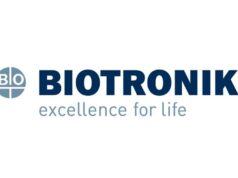Presented as a late-breaking trial at HeartRhythm 2012 (9–12 May, Boston, USA), the ADVANCE III (Avoiding delivering therapies for non-sustained arrhythmias in ICD patients III) trial found that a greater number of intervals to detect (NID) arrhythmias significantly reduces unnecessary implantable cardioverter defibrillator (ICD) therapy.
Study presenter and lead author Maurizio Gasparini (Istituto Clinico Humanitas IRCCS, Milan, Italy) told delegates at HeartRhythm2012, “We know that patients do not like having too many shocks and that shocks reduce quality of life. If we want to improve quality of life, we should try to abolish-completely abolish-unnecessary shocks or reduce them as much as possible.” He added that there were two strategies for reducing shocks, which he explained were antitachycardia pacing and, most importantly, correct detection of arrhythmias that warrant shock therapy.
Previous, non-randomised, studies have shown that using a greater number of intervals to detect (30/40) arrhythmias can safely reduce unnecessary therapy in primary prevention studies. Therefore, the aim of the ADVANCE III study was to see if increasing the number of intervals to detect arrhythmias could reduce unnecessary therapy in a global, prospective, parallel, randomised, single-blinded, trial setting. Gasparini said that the primary endpoint was to: “Demonstrate a 20% reduction of ventricular therapies (antitachycardia pacing and shocks) for spontaneous arrhythmias with a fast cycle length by choosing a number of intervals to detect of 30/40 compared to 1,824 in primary or secondary prevention of any aetiology and any Medtronic ICD (single/dual/cardiac resynchronisation therapy).”
A total of 1,902 patients were randomised to receive devices programmed with a number of intervals to detect of 30/40 (948) or 18/24 (954). In all patients, devices (either single, dual, or CRT) were programmed to treat ventricular arrhythmias with antitachycardia pacing for episodes of cycle lengths between 320ms and 200ms, during charging before shocks, and programmed to only treat with shocks episodes of cycle lengths of <200ms.
After a median follow-up of 12 months, Gasparini said: “The primary endpoint was achieved with a dramatic reduction in ventricular therapies in the population with the long detection window.” He explained that there were 346 therapies in the 30/40 arm compared with 557 therapies in the 18/24 arm, which resulted in a 37% reduction (p<0.001) in ventricular therapies – “well above the 20% that was in the design of the study”, Gasparini reported. He noted that according to Kaplan-Meier estimates, therapy-free survival was significantly increased in patients with the longer number of intervals to detect. After 12 months of follow-up, the time to first therapy was 0.17 months in the 18/24 arm compared with 0.12 months in the 30/40 arm (p<0.001).
About the safety of increasing the interval window, Gasparini said: “If we decide to wait to deliver a shock or therapy, we have to observe safety. The first point is syncopal events and we did not observe any difference between in syncopal events between these groups (2.2 patients per year for the 30/40 vs. 1.1 patients per year for the 18/24 arm; p=0.21).” Additionally, patient mortality did not significantly differ between groups (3.9 patients/years for the 30/40 arm vs. 4.6 patient/years for the 18/24 arm; p=0.43).
Gasparini concluded: “ADVANCE III is the first randomised trial, in primary and secondary prevention, ischaemic and non-ischaemic patients, aiming to assess the efficacy and safety of long number of intervals to detect in any ICD with antitachycardia pacing during charging. This strategy was demonstrated to be safe and effective in reducing unnecessary ICD therapy.” He added: “Despite the safety and efficacy of long number of intervals to detect, in many cases, nominal ICD settings are probably too conservative.”









